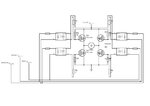thir13enth
Member level 1
- Joined
- Feb 23, 2011
- Messages
- 38
- Helped
- 4
- Reputation
- 8
- Reaction score
- 4
- Trophy points
- 1,288
- Location
- Quezon City, Philippines
- Activity points
- 1,545
Purpose: PWM Controlled Vehicle
Rating: 20A+ & 12V-24V
-------------------------------
I have attached here a schematic diagram taken from my design in Proteus. It works good on Proteus and hopefully, it would be working when we implement it on hardware.
Please check it if I am missing something which I should include upon doing the hardware. We are planning to buy the materials ASAP, your suggestions are very welcome!
:-D
Rating: 20A+ & 12V-24V
-------------------------------
I have attached here a schematic diagram taken from my design in Proteus. It works good on Proteus and hopefully, it would be working when we implement it on hardware.
Please check it if I am missing something which I should include upon doing the hardware. We are planning to buy the materials ASAP, your suggestions are very welcome!
:-D
Attachments
Last edited:



